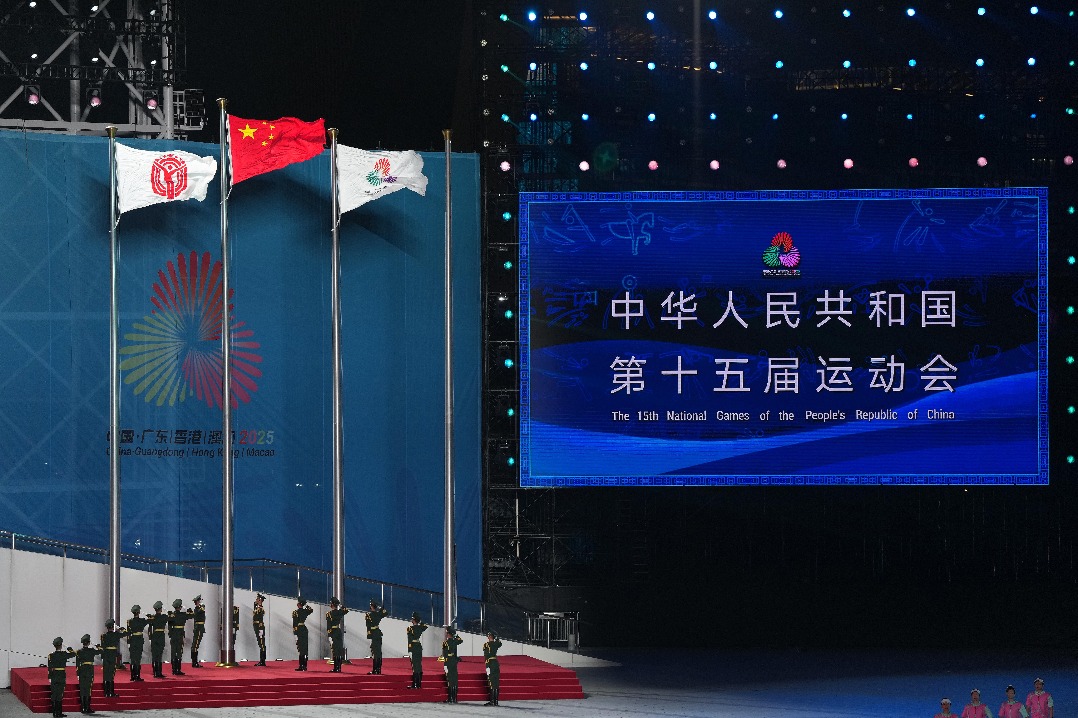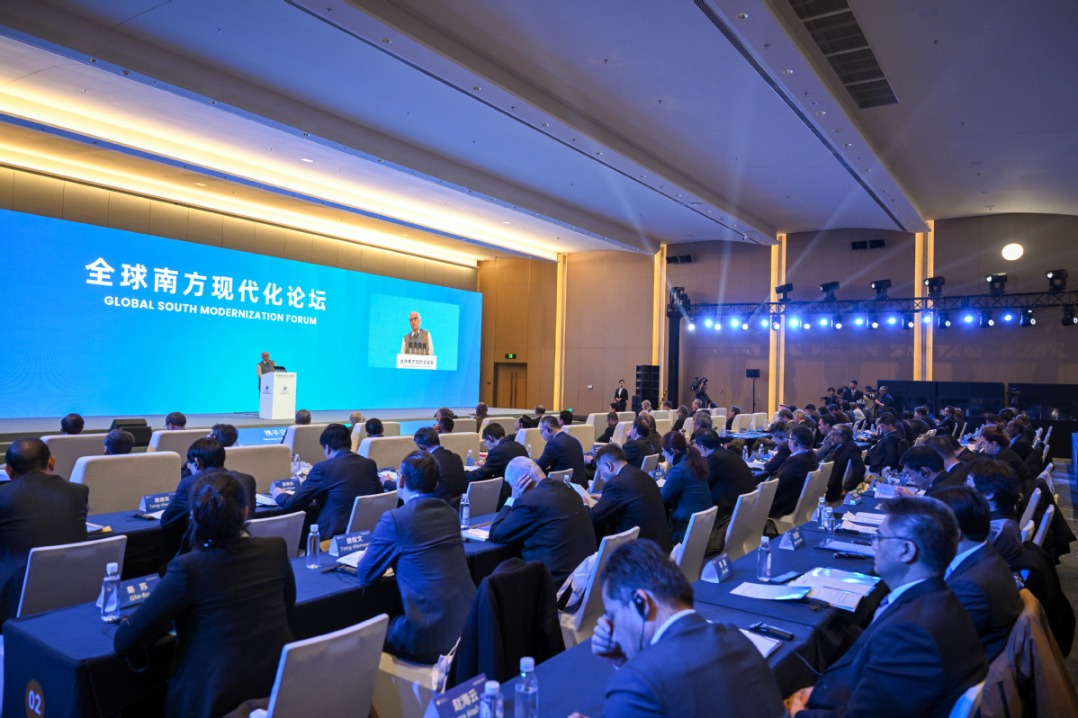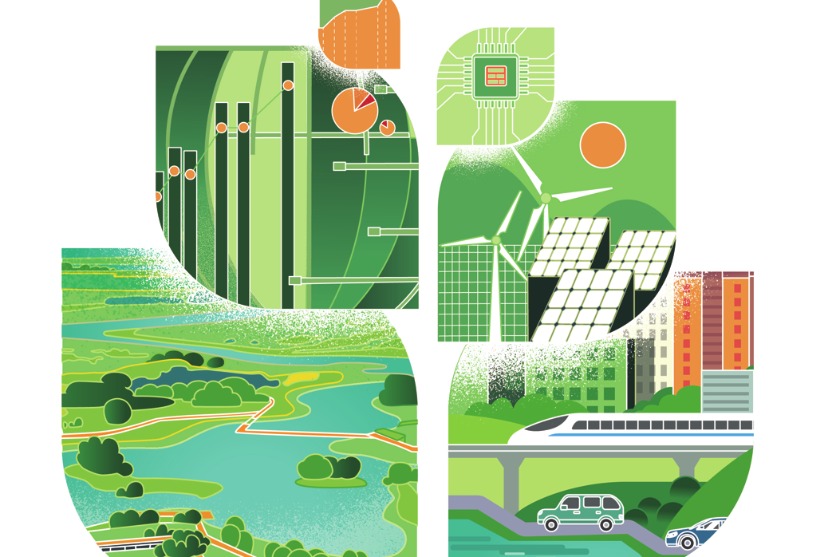In praise of wetlands
As China prepares to host the 14th Conference of Parties on the Ramsar Convention on Wetlands, it can show-case its recent actions to conserve these vital ecosystems

As China prepares to host the 14th Conference of Parties on the Ramsar Convention on Wetlands, it can show-case its recent actions to conserve these vital ecosystems

Poyang Lake, China's largest freshwater lake, is a national and global treasure. The lake's abundant natural resources — of great economic importance to local people — include diverse wetland vegetation, a remarkable array of fish species, the only freshwater porpoise in the world, and the largest concentration of wintering waterbirds in East Asia, including almost the entire population of the critically endangered Siberian Crane. This rich biodiversity as well as important ecological services depend on the remarkable natural fluctuations in water levels both within and among years.
However, the drought in Southeastern China in the summer of 2022 brought with it pictures of people picnicking on the dried-out bed of the lake, at a time when water levels are normally at their highest there. Yet only 12 months earlier, the same area of the Yangtze Valley was experiencing record floods, causing huge losses of life and property. As climate change shifts ocean currents and temperatures, affecting the seasonality and severity of monsoon events, such unpredictability is likely to become even more pronounced. How to manage short-term unpredictability while planning for long-term sustainability is one of the most difficult challenges we face. However, we have a strong but overlooked natural ally in these efforts — wetlands.
Wetlands have an amazing capacity to absorb, retain and release water, ameliorating the impacts of flooding and providing water during dry spells. They are also critical for maintaining water quality and some wetlands have enormous capacity to mitigate climate risk. Peatlands, which China is generously blessed with, particularly in the upland areas, store more carbon than all the world's forests put together. Coastal wetlands, such as the mangrove forests in Southeast China, are critical buffers against the increasing impacts of storms and rising sea-levels.
The Ramsar Convention on Wetlands has a goal of "the conservation and wise use of all wetlands through local and national actions and international cooperation, as a contribution toward achieving sustainable development throughout the world". The Convention is the oldest of the Multilateral Environment Agreements, bringing together 172 country governments. China has been a contracting partner since 1992 and will this year celebrate its 30 years of association by hosting the 14th Conference of Parties, to be held jointly in Wuhan and Geneva. In recent years, China has been very active in conserving its wetlands. A 2018 decision to ban reclamation of coastal wetlands has led to the inscription of "Migratory Bird Sanctuaries of the Yellow Sea and Bohai Gulf" on the World Heritage List. A Phase I inscription focused on Jiangsu province and a Phase II is currently reviewing sites in other coastal provinces. China has included 64 sites on Ramsar's list of Wetlands of International Importance and in December 2021, the Standing Committee of the National People's Congress passed the Wetlands Protection Law, the first unified legislation on wetland conservation and restoration in the country. Collectively, these measures will help to safeguard the rich biodiversity that China's wetlands are famous for, notably six species of cranes, and migratory waterbirds that migrate from as far as Australia and New Zealand.
It is important to understand that wetlands are all connected, not only to each other and other water systems, but also to other landscapes in which they are situated, be those natural or modified by human activities. They are further connected by the species that depend on them, such as long-distance migratory bird and fish species. Indeed, one of the three pillars of the Ramsar Convention is "international cooperation on transboundary wetlands, shared wetland systems and shared species". They are also connected to communities that live around them and those living upstream and downstream. Thus, all wetlands are important, from small urban wetlands to huge wetlands of international significance such as Poyang Lake. But equally important is the need to maintain the natural functioning of wetlands, so they are able to continue to deliver a variety of services. Since many wetlands now exist within a mosaic of very developed landscapes, often with competing demands for water, a premium must be put on conservation and restoration that encourages natural cycles, for example, of drying out and re-wetting that enables wetlands to function as dynamic and healthy ecosystems. Some management techniques are quite simple, for example, creating small check dams to retain water in peatlands where erosion has led to some areas drying out.
Even in nature reserves with a traditional "hands-off" approach, carefully thought-out and monitored vegetation and water control management can revive the natural succession processes and avoid the risks of stagnation and choking vegetation. Yet many of China's new wetland parks are focused on recreation rather than conserving natural ecosystems and their rich biodiversity. As more citizens begin to care about saving nature, a more balanced approach is needed.
As part of developing an ecological civilization, President Xi Jinping has repeatedly emphasized the need to consider management of the Yangtze River and its associated wetlands, such as Poyang Lake, in a comprehensive and holistic manner based on the ecological integrity of the entire system. This insightful approach parallels international recognition that ecosystem-based approaches are vital for dealing with issues of sustainable wetland and water management within a larger context, to deliver a wide array of ecosystem services and benefits to a broad range of stakeholders.
China has a huge opportunity to promote natural wetland conservation and restoration within the rubric of an ecological civilization by showcasing its achievements and approach and committing to a new era of saving these vital and vibrant ecosystems and landscapes.
The author is vice-president and director of Asia programs at the International Crane Foundation. The author contributed this article to China Watch, a think tank powered by China Daily.
Contact the editor at editor@chinawatch.cn


































